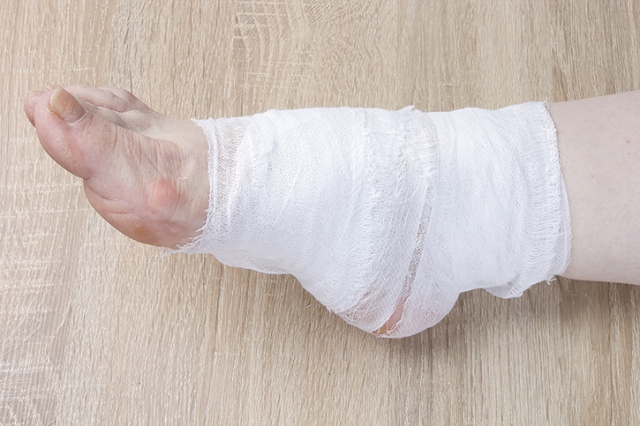By Ellen Kirk-Macri and Susan C. Jenkins
Up to 80 per cent of diabetes-related amputations are avoidable. Prevention starts with proper assessment and care of the feet in patients with diabetes. A nurse begins the assessment by taking a history, examining the feet, testing for loss of sensation and reduced circulation, and classifying the risk.
Components of a diabetes foot check
- History: Ask the patient about any foot issues that have arisen since the last assessment and inquire about the daily foot care routine to ensure that the patient or caregiver is following the appropriate procedures.
- Physical examination: Start with a visual inspection of the lower legs and feet. Check for dry, cracked skin, fissures, and any changes to the colour or texture of the skin. Examine the toenails for length, colour, thickness, debris, odour, pain, and separation from the nail bed. Record the location, size, and colour of calluses and any areas that appear to be the result of mechanical stress or pre-ulcer formation. Look for any structural abnormality such as hammer toes or bunions that may make ulceration more likely.
- Testing sensation: Loss of protective sensation is the single most significant risk factor for foot ulcers, because the patient is unable to perceive the warning signs of ulcer development. One common method for testing sensation uses a 10g monofilament. Begin by showing the filament to the patient and placing it on his/her hand or arm to show that it will not hurt. Hold the monofilament perpendicular to the skin and press until it bends. Hold it in this position for one to three seconds. Ask the person to say “yes” when he/she feels the filament. Do not press the filament to the skin and then ask, “Did you feel that?” Touch the underside of the big toe and three equally-spaced points across the ball of the foot. When you complete the sequence, go back and retest the areas the patient did not respond to. Repeat the procedure on the other foot, testing the spots in a random pattern.
- Checking circulation: Check the skin temperature on the patient’s leg and foot using the back of your hand. Normally, the leg is warmer at the tibia and cooler at the toes. Dilation of the capillaries in the toes can cause the temperature to be the same in both areas. Also check for the presence of varicose veins, brown staining in the ankle area, edema, and scarring from previous ulceration. Check for capillary filling time by pressing on the distal pulp of the toe until it blanches; then release the pressure. Normal reperfusion takes up to five seconds. Delayed refilling is a sign of arterial ischemia.
Classifying the risk
- Low risk: If there are no problems noted, the patient should be reassessed annually.
- Moderate risk: A patient with one risk factor but without calluses or deformity should be referred to a foot care specialist for further assessment.
- High risk: A patient with a history of ulceration or amputation or more than one risk factor should see a foot care specialist within the next three months
- Urgent: A patient with any of the following should see a foot care specialist or physician for immediate assessment:
- active ulceration
- spreading infection
- critical ischemia
- gangrene
- unexplained hot, red, swollen feet
- painful peripheral neuropathy
- acute Charcot foot (a weakening of the bones due to nerve damage)
All patients, regardless of risk level, should have a foot care management plan tailored to their individual circumstances.
Ellen Kirk-Macri is a registered nurse and certified diabetes educator. Susan C. Jenkins is a freelance writer and editor specializing in medicine, pharmacy, and healthcare. She can be reached at susancjenkins@gmail.com.




Comments are closed.